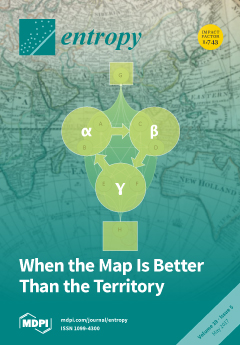In classical Maxwell electrodynamics, charged particles following deterministic trajectories are described by currents that induce fields, mediating interactions with other particles. Statistical methods are used when needed to treat complex particle and/or field configurations. In Stueckelberg–Horwitz–Piron (SHP) electrodynamics, the classical trajectories are traced
[...] Read more.
In classical Maxwell electrodynamics, charged particles following deterministic trajectories are described by currents that induce fields, mediating interactions with other particles. Statistical methods are used when needed to treat complex particle and/or field configurations. In Stueckelberg–Horwitz–Piron (SHP) electrodynamics, the classical trajectories are traced out dynamically, through the evolution of a 4D spacetime event
as
grows monotonically. Stueckelberg proposed to formalize the distinction between coordinate time
(measured by laboratory clocks) and chronology
(the temporal ordering of event occurrence) in order to describe antiparticles and resolve problems of irreversibility such as grandfather paradoxes. Consequently, in SHP theory, the elementary object is not a particle (a 4D curve in spacetime) but rather an event (a single point along the dynamically evolving curve). Following standard deterministic methods in classical relativistic field theory, one is led to Maxwell-like field equations that are
-dependent and sourced by a current that represents a statistical ensemble of instantaneous events distributed along the trajectory. The width
of this distribution defines a correlation time for the interactions and a mass spectrum for the photons emitted by particles. As
becomes very large, the photon mass goes to zero and the field equations become
-independent Maxwell’s equations. Maxwell theory thus emerges as an equilibrium limit of SHP, in which
is larger than any other relevant time scale. Thus, statistical mechanics is a fundamental ingredient in SHP electrodynamics, and its insights are required to give meaning to the concept of a particle.
Full article






